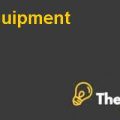Overview
Indian Railway is on the verge of expanding its freight network due to the increased economic activity and the rise of the GDP in India which has aroused the need for freight carriage requirements. Therefore, in order for accurate monitoring of its freight wagon, the Railway industry wants to implement a different automatic identification system by embedding a technological equipment. Ranbir Singh, head of the Center for Railway Information System (CRIS) has been provided with authorities to make decisions regarding the implementation of technological system in freight wagons. If the selected technological system makes a good impression in freight wagon category, then it shall be implemented throughout the country. However, Ranbir Singh has to come up with a solution which satisfies every stakeholders.
The paper attempts to describe the problems faced by the CRIS department of Indian Railways and performs an analysis of its alternate solutions that have been identified. The paper also sheds light on the various considerations that could be analyzed in making a final choice amongst the proposed options. Furthermore, the paper elaborates the various stakeholder group which has influence in the decisions made by Ranbir Singh, and identifies the most important stakeholder of the industry. Lastly, the paper evaluates the pros and cons of alternatives and provides recommendations.
Problem Identification
The Center for Railway Information System (CRIS) is a department within Indian Railways has decided to pilot project test of Radio Frequency Identification (RFID) system in its freight railcars to boost freight operations efficiency. However, currently there are many alternatives available to RFID. Indian Railway is concerned not just about selecting the alternatives for freight tracking in its freight wagon, but also the decision that shall be selected must be feasible for all the internal and external stakeholders of Indian Railways.
Analysis of Alternative Solution
Various Considerations to be Analyzed before Final Choice
The first and foremost process that shall be applied by the CRIS department is to conduct a thorough analysis of the options and their compatibility with respect to the specific departments of Indian Railway. Understanding the strengths and weakness for each option would allow CRIS to make concrete recommendations to the Executive Officer to the Minister of Railways with the approval of the finance department. The specifications and demands for each department shall be analyzed so as to meet their requirements amongst many different options. Finally, Ranbir Singh has to keep in mind the future strategies of the particular alternative and its utilization in the near future must also be analyzed. This would help CRIS to evaluate the alternatives with respect to the future long term benefits it could produce for the Indian Railway and for the entire Indian economy (OECD, 2010).
Alternatives
Alternative 1: RFID System
Advantages
The particular technological device uses reader/interrogators which do not have a battery or any other power source which is attached on the freight wagons. These devices pull up the power from the reading range. RFID system has been perfectly implemented in many developed nations which provides Indian Railway with a set example. Therefore, it can be said that there are low chances of failure for the particular system. It is a method of providing a comprehensive tracking of freight wagon. RFID also has the benefits of adapting to certain requirements of countries. The particular system has the backing of all departments. The opportunity available with the implementation of an RFID system is the updated version of the particular system referred to as EPC Gen2 which can be implemented in near future.
Disadvantages
A higher cost associated with RFID system along with the uncertainty of the implications in the complex Railway system of India is a disadvantage for Indian Railways as none of the examples could be found where the process is successfully implemented in a complex railway system. The organization is not clear about the cost and benefit analysis of RFID system. There is a possible threat to the system can interfere between the mechanical department. However, if this happens then the mechanical department has equal rights to disapprove the system without prior notice.
Alternative 2: EPC Gen2
Advantages
It is the advanced form of RFID system which incurs moderate cost and is more efficient than that of RFID system. It can provide an accurate monitoring of the wagons along with low turnaround time. There would be no need for the appointment of clerks as it would save time and cost of the Indian Railway. Furthermore, the EPC Gen2 is suitable for all the departments as far as the mechanical department does not have problems with its fixture. An opportunity could be identified as many countries around the world have currently implemented the particular system which is an upgraded system..................
This is just a sample partial case solution. Please place the order on the website to order your own originally done case solution.











